Our
features
Multi-purpose Dosimetry Solution
Supporting most of the methodologies for daily practice | Programing interface | Accelerated automated workflows | and much much more
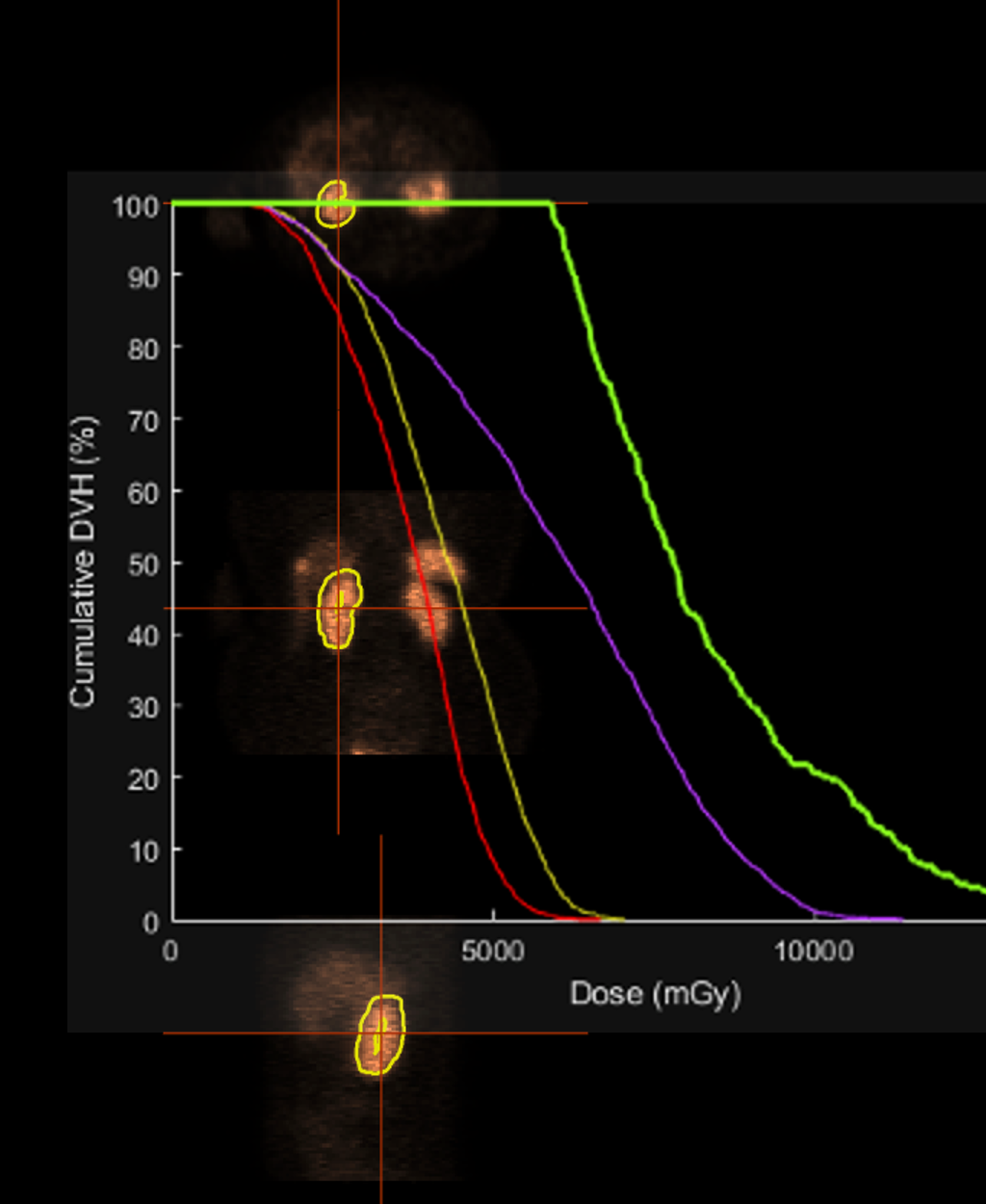
Voxel and Organ Dosimetry
Users may choose to perform both efficacy and safety dosimetry at the same time.
- Voxel S kernels enable the calculation of dose values and cumulated dose volume histograms (DVHs)
- Spherical model as continuous interpolation model using power functions
- Activity extrapolation and nuclide replacement for dose prediction
- IDAC-Dose 2.1 for phantom-based calculations
- Export of residence times to OLINDA/EXM
Supporting a Rich Set of Radionuclides
Lu177, In111, I124, Y86, Y90, O15, C11, Cu64, Cu67, Tc99m, Ga68, I131, F18, Ho166, Sm153, Zr89, Sc44, Sr89, Ac225, Bi213, Re186, Re188, Pb212, At211, Ra223, Ra224, Th227
(Looking for an isotop not in the list? Contact us!)
(Looking for an isotop not in the list? Contact us!)
Multiple Parallel Workflows
In QDOSE+, users can decide the workflow: single or in parallel, depending on the data available and loaded.
PRRT treatment methods
- Planar (2D): Multiple time points of conjugate view imaging
- Hybrid (2.5D): Multiple time points of conjugate view imaging and one quantitative SPECT/CT imaging time point for improved quantification
- Single-point dosimetry where users can set up their own functions and conditions
- Volumetric (3D): Multiple time points of quantitative SPECT/CT or PET/CT imaging
SIRT treatments
- Pre-treatment dose calculation based on planar or SPECT planning
- Post-treatment dosimetry using a single time point of 90Y PET/CT or Bremsstrahlung SPECT/CT
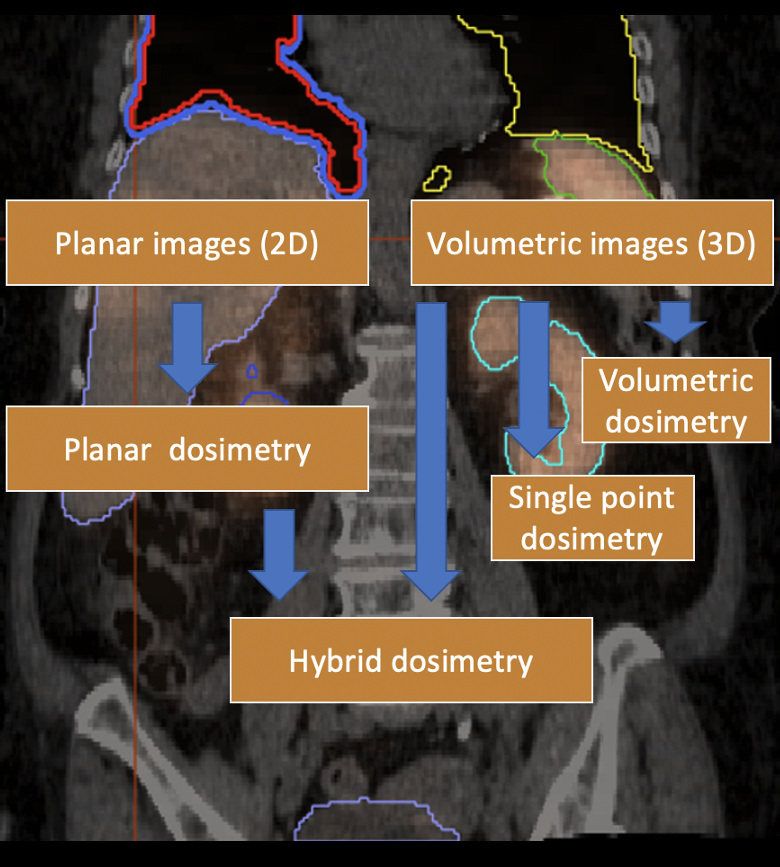
Singel Time Point Dosimetry (STPD) or using time activity curves (TACs) from one cycle to another? QDOSE+ provides you with the functionality needed with just a few clicks.
Unique Organ Based Coregistration
QDOSE+ provides an automatic organ based coregistration for user error minimization:
- Fully automated organ segmentation of time points
- Quality measure in x- and y-alignment
- Selection of reference and anterior-posterior for optimized auto-segmentation
- Manual alignment
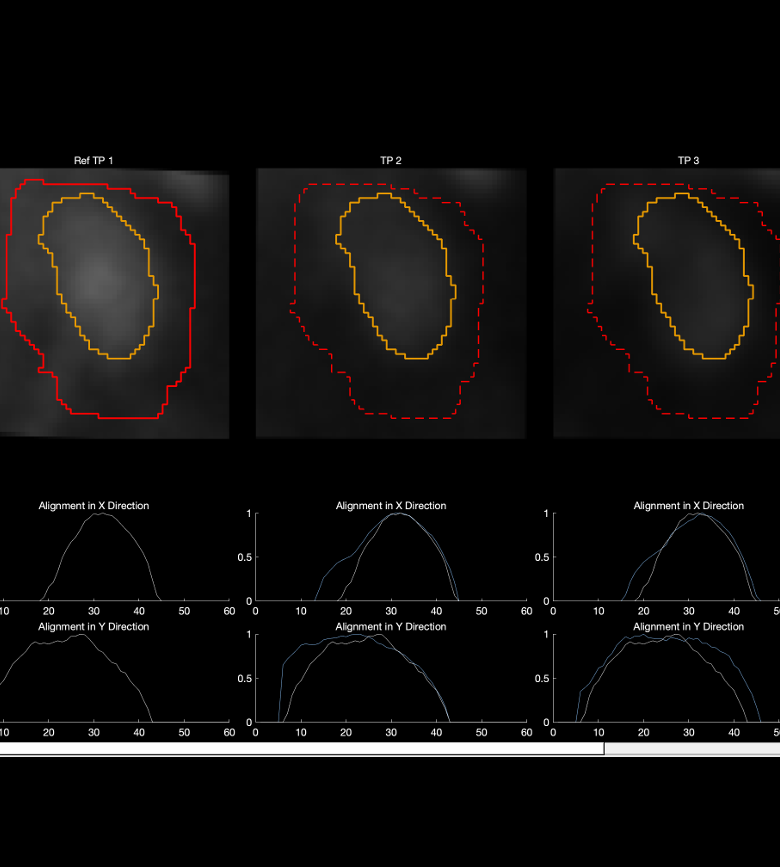
Advanced Drawing and Segmentation
QDOSE+ provides multiple options for ROI and VOI boundary drawing on planars, SPECT, CT, or fused data including:
- Drawing (freehand, polygon, ellipse) and editing of regions in 2D and 3D
- Copy/paste of boundaries and segmented ROIs/VOIs between time points
- Separated handling of volume- and activity regions in 3D
- Automatic 3D-organ segmentation (AI-based)
- Automatic/semi-automatic ROI/VOI segmentation
- Signal-to-background ratio VOI segmentation
- Fuzzy logic cluster segmentation
- Region growing segmentation

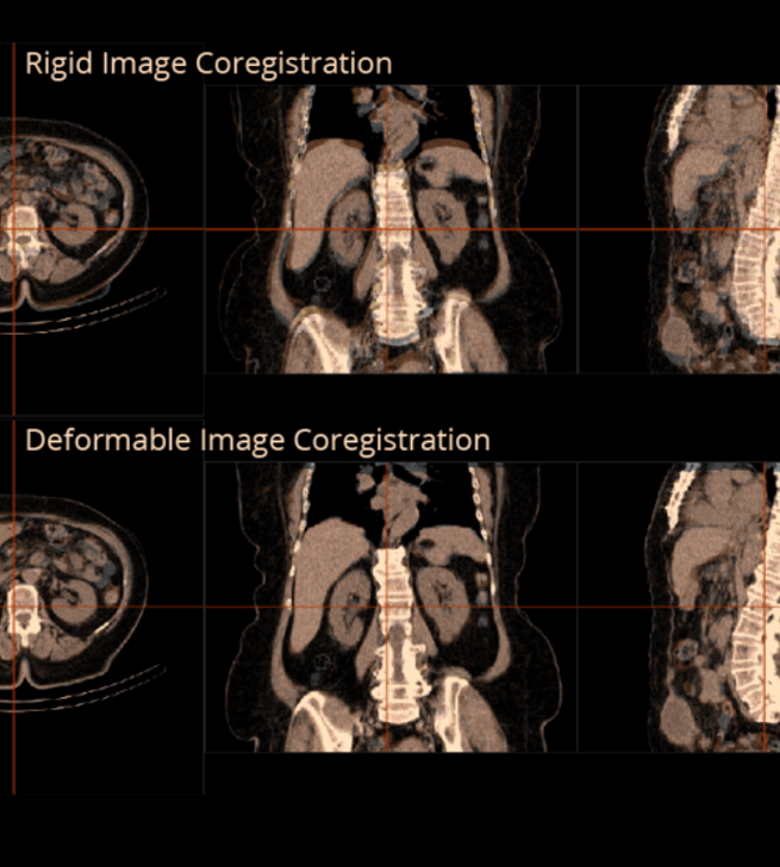
Rigid and Deformable Image Coregistration
Disregarding of dosimetry method used (2D, 2.5D, or 3D), QDOSE+ provides a coregistration method to minimize image and organ displacements.
- Automatic and manual rigid 2D coregistration on the whole body and organ level
- Dedicated 2D coregistration of reference (e.g. vial)
- Automatic (rigid and deformable) and manual rigid 3D coregistration between time points based on CT
- Automatic and manual rigid 3D coregistration between SPECT/PET and CT/MRI for the same time point
- Accelerated 3D manual coregistration using GPU
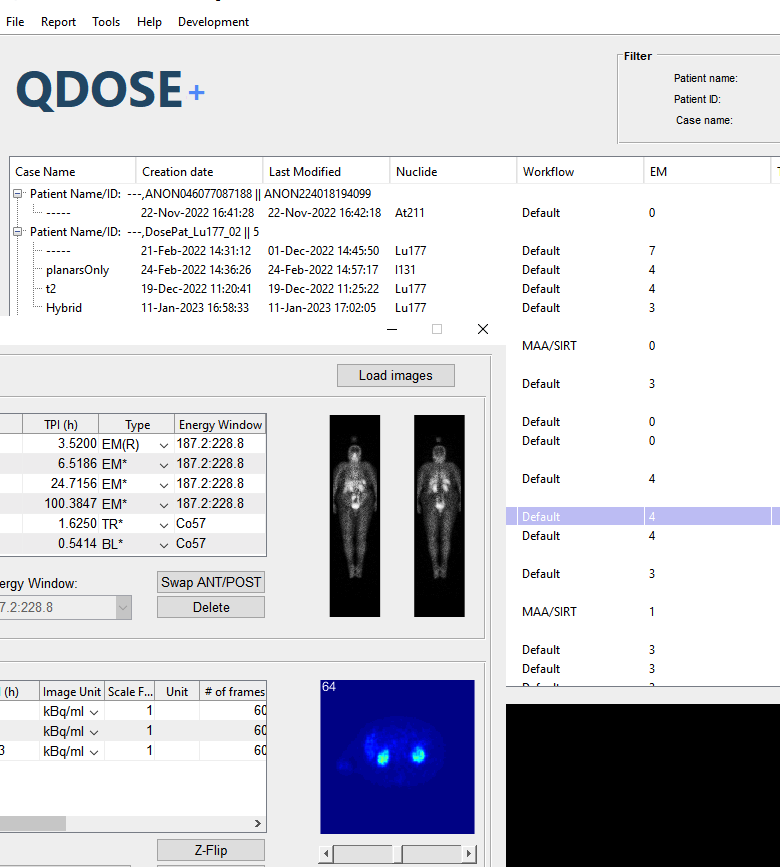
Data Management
Managing data in QDOSE+ is easy. Data folders can easily be scanned for images which are sorted automatically.
- DICOM import of NM/PET/CT and MRI
- Recursive folder support with energy and head consistency checks
- Possibility to retrospectively add images
- Specification of image units and calibration factors
- Accessible overview and editing of metadata
Interested in a new module? Test your own ideas! QDOSE+ provides researchers access to data where they can run their own function in Matlab functions from a command line.

STAND-ALONE SOFTWARE
No need for dedicated advanced hardware. Run it off any windows system

EXPORT AND INTERFACE
Supports CSV-export and programming interface for research and data mining.

EXTENSIVE RADIONUCLIDES
Over 26 incorporated radionuclides. Contact us for additional ones!
